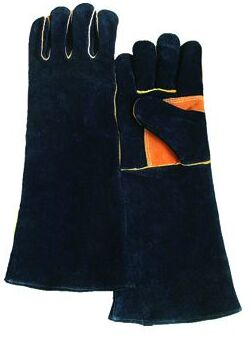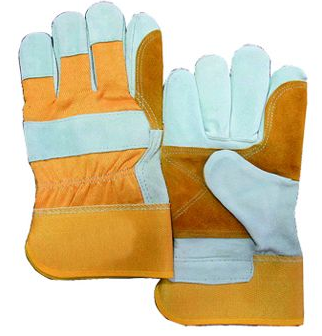Choosing the Right Gloves for Construction WorkersConstruction workers face a myriad of hazards on the job, and wearing the right gloves is crucial for their safety and comfort. Selecting appropriate gloves depends on the specific tasks and potential risks involved. Here's a guide to help construction workers choose the right gloves for various situations:
1. Leather Gloves for General Protection
Leather gloves are versatile and provide general protection for construction workers. They offer durability, abrasion resistance, and good grip. Choose leather gloves with reinforced palms and fingers for added protection against cuts and punctures.
2. Cut-Resistant Gloves for Precision Tasks
For tasks involving sharp tools or materials, such as cutting or handling metal, construction workers should opt for cut-resistant gloves. These gloves are often made from materials like Kevlar or high-performance polyethylene to provide excellent cut protection without compromising dexterity.
3. Impact-Resistant Gloves for Heavy Machinery
Construction workers dealing with heavy machinery or tools that can cause impact injuries should wear impact-resistant gloves. These gloves often feature reinforced padding on the back of the hand and fingers to absorb and dissipate impact energy.

4. Chemical-Resistant Gloves for Hazardous Substances
When working with hazardous substances such as chemicals, construction workers should wear chemical-resistant gloves. These gloves are designed to provide protection against various chemicals and prevent skin exposure. Ensure the gloves are suitable for the specific chemicals encountered on the job.
5. Insulated Gloves for Cold Environments
In cold weather conditions, construction workers should wear insulated gloves to protect against frostbite and maintain dexterity. Look for gloves with thermal insulation and water-resistant properties to keep hands warm and dry in cold and wet environments.
6. Heat-Resistant Gloves for Hot Work
Construction workers involved in welding or tasks with high heat exposure should wear heat-resistant gloves. These gloves are designed to withstand elevated temperatures and protect against burns. Choose gloves with appropriate heat resistance ratings for the specific work environment.

7. High Visibility Gloves for Enhanced Safety
In situations where visibility is crucial, such as low-light conditions or roadwork, construction workers should wear high-visibility gloves. These gloves often feature bright colors and reflective materials to increase visibility and enhance overall safety.
8. Waterproof Gloves for Wet Conditions
When working in wet conditions or handling liquids, construction workers should wear waterproof gloves. Look for gloves made from materials that repel water while maintaining flexibility and grip to ensure comfort and safety in wet environments.
9. Disposable Gloves for Clean Environments
In situations that require a high level of hygiene, such as handling materials that can contaminate surfaces, construction workers may need to wear disposable gloves. Choose gloves made from nitrile, latex, or vinyl based on the specific requirements and potential allergens.
10. Consideration of Fit and Comfort
Regardless of the type of gloves chosen, construction workers should prioritize a proper fit and comfort. Gloves that are too tight or too loose can compromise dexterity and increase the risk of accidents. Choose gloves with adjustable closures for a secure fit.
Conclusion
Selecting the right gloves for construction work involves considering the specific hazards and requirements of the job. Construction workers should always prioritize safety and comfort by choosing gloves that provide the necessary protection for their hands in various working conditions.







